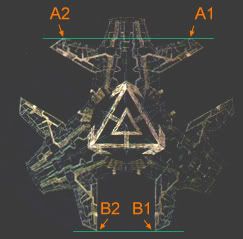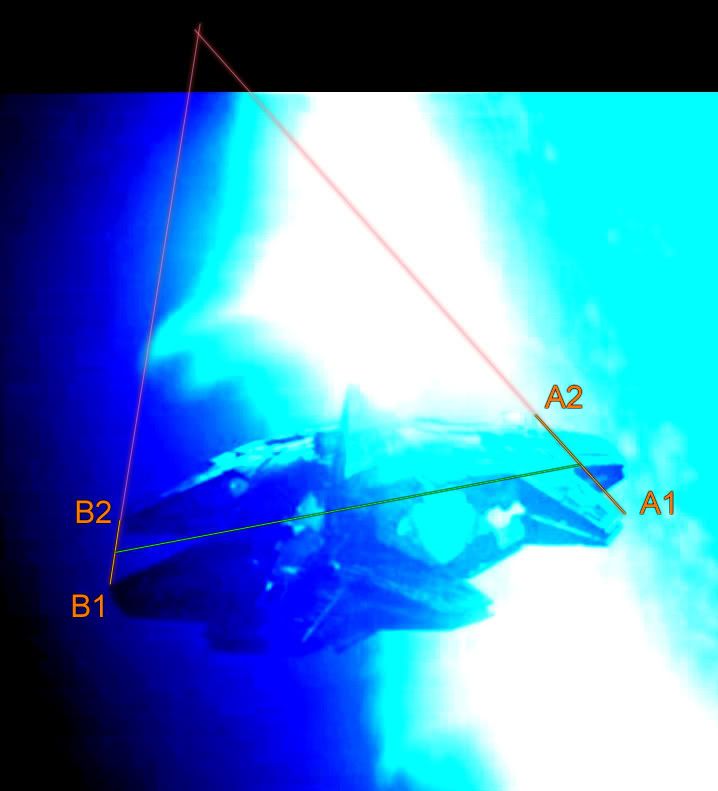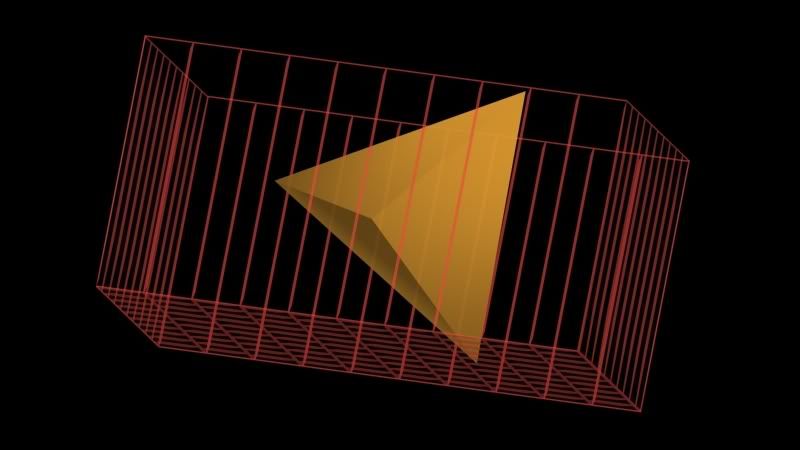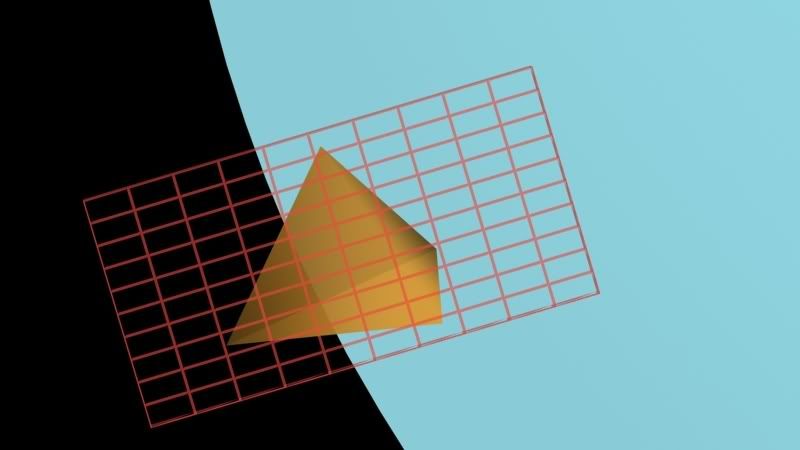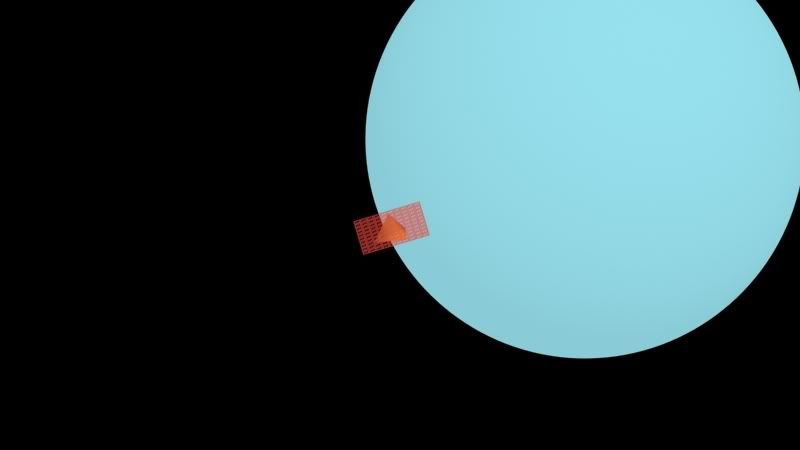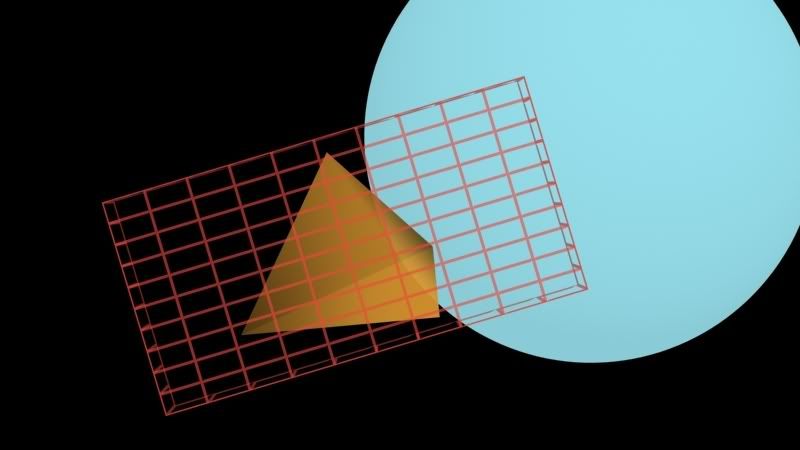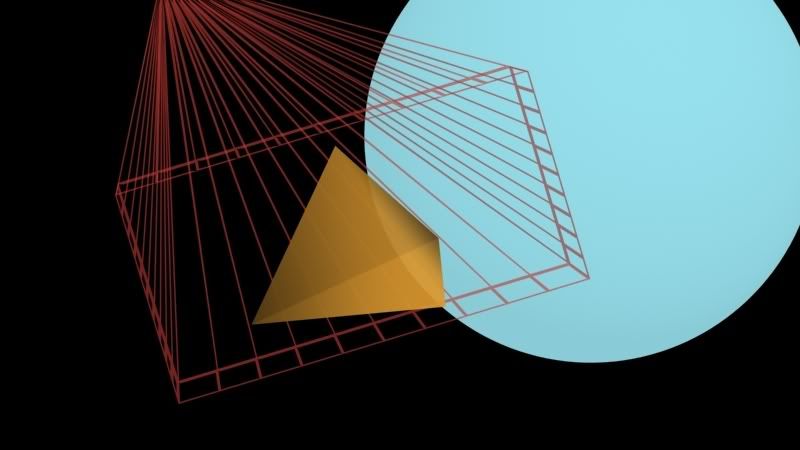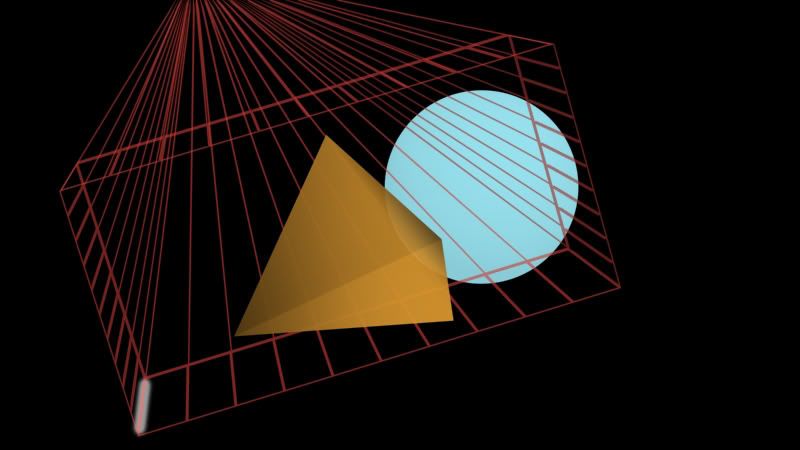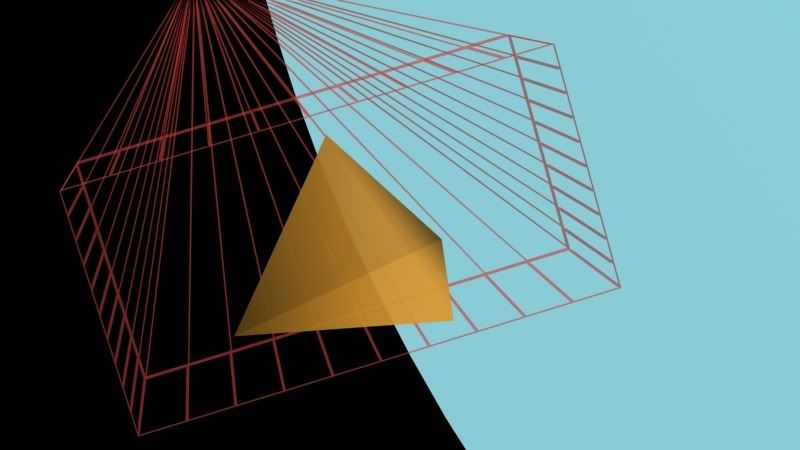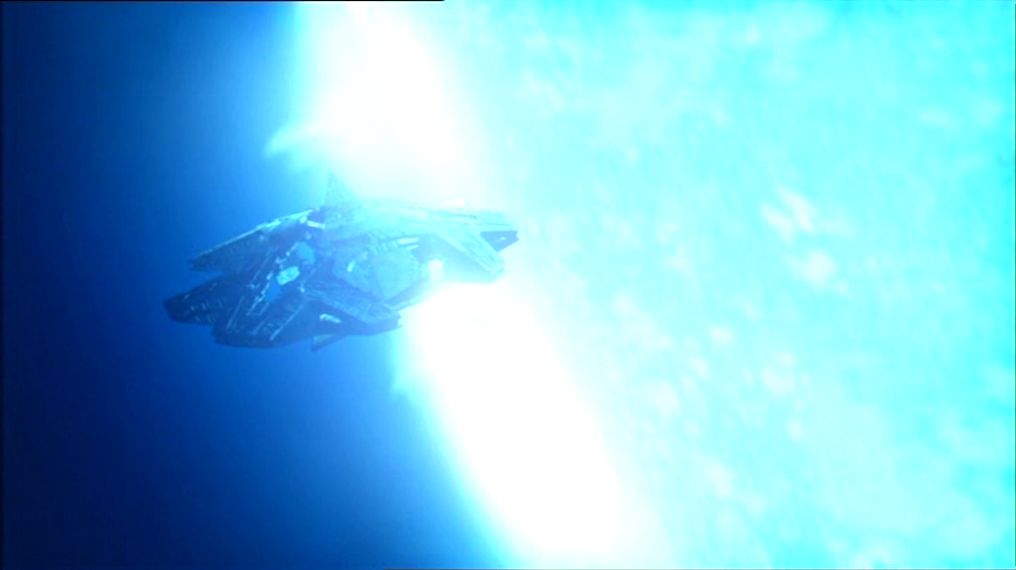Stargate: Conservative ha'tak shields estimations
Posted: Fri May 11, 2007 1:18 am
The goal here is to obtain the most conservative figures for a ha'tak shields.
So we have to look at Stargate Sg-1, episode Enemies (5.01).
The situation:
Jacob has positionned their ha'tak roughly one star radius from the photosphere of a blue giant, located in some uncharted part of the universe.
The dialogue says that the hull will be able to hold on for one hour, while the shields will last for ten hours at the same rate.
So we need the dimensions of a ha'tak, and the specs of the various blue giants.
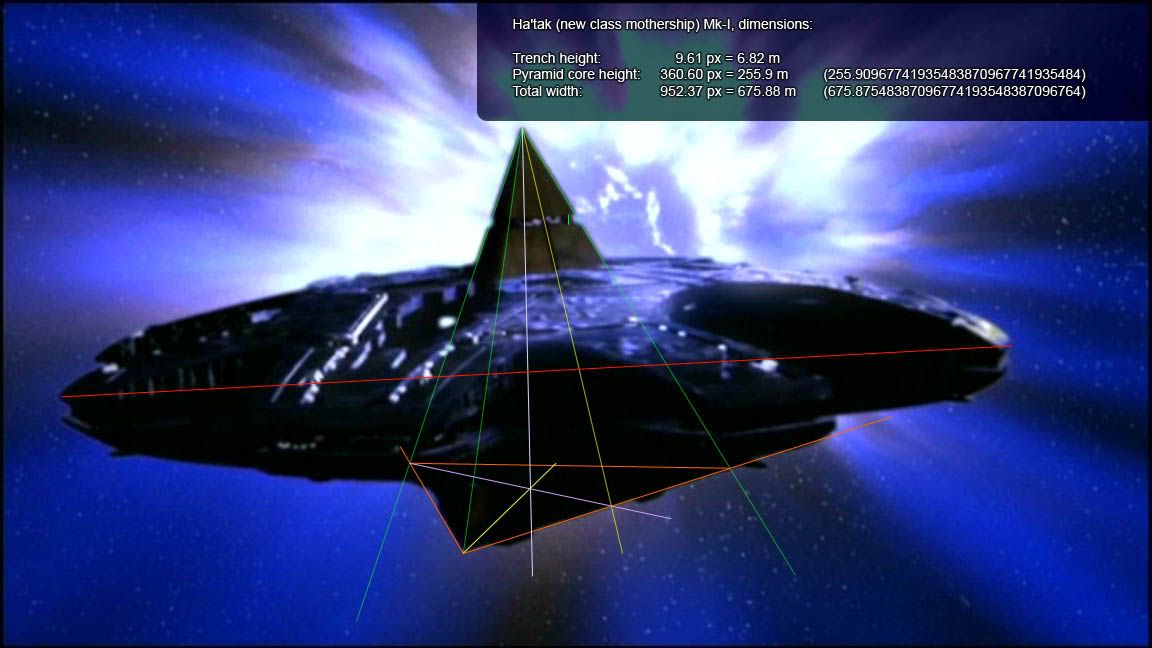
Pyramid core height: 255.9 m.
Ha'tak width: 675.88 m.
Please also consider that these measurements are based on an old generation Ha'tak. This can mainly be seen because of the structural differences, both inside and outside the ship.
Things become quite special at that point. For example, a ship belonging to one System Lord may have better hyperdrives, but weakier shields (according to these observations, Apophis' ships could go at 207,599.759 c, way beyond the often touted 32,000 c figure).
On the same hand, the model I used may be slightly smaller than the newer ha'taks which appeared under Sokar. It's unknown, however, if Sokar's ha'taks were literally newer or not, but they were the latest to introduce a new structural design.
The fact that some other System Lords were seen owning one or more of them may indicate that they either captured them, or already possessed built them on their own. Or maybe they were gifts. We don't really know after all. But it's simpler to refer to them as Sokar's.
The oldest ha'taks to be known are the pyramid ships used by Ra's family.
We've seen, in It's Good to be King (season 8), that the models used by Apophis were also used by other minor System Lords.
However, considering that the model seen in the first picture might be smaller than those introduced by Sokar, it will provide us with conservative dimension figures.
Now let's see the ratio between shield width and ship width:
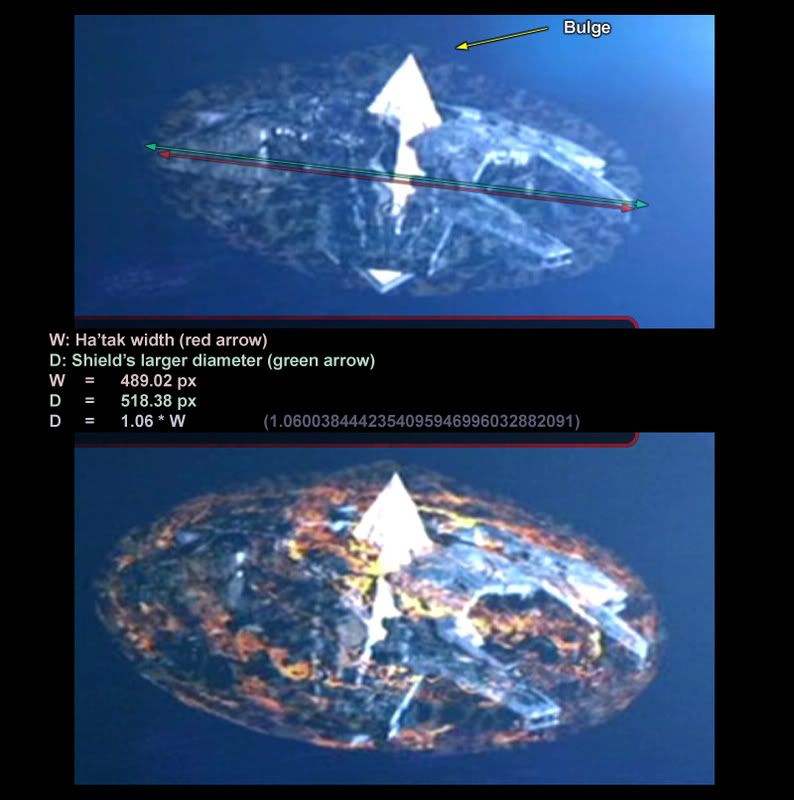
We will assume the ratio (1.06) is the same concerning the heights. This will also provide a conservative figure, because of the core's base, which requires a greater gap between the shield's inferior hemisphere and the base. Plus there's the bulge to consider, which would have required a special shape, increasing the surface even more.
So we're definitely going for a low end here.
Now, the areas:
- Circle: pi * radius²
- Ellipse: pi * radius1 * radius2
- Sphere: 4 * pi * radius²
So I'm going to bend maths a bit and go with a flattened sphere's area of "4 * pi * radius1 * radius2".
S = Shield Surface
S = 4 * pi * (675.88 / 2) * (255.9 / 2) * (1.06)²
S = 4 * pi * 337.94 * 127.95 * 1.1236
S = 610522.23372978025782732309506607
S = 6.105 * e5 m²
Now, I'm going to use the luminosity/m² figures at the photosphere, which An Ancient obtained, at Spacebattles. They're correct, so I'll use them, divided by four, coupled to my shield surfaces.
Low End Shield Capacity
C = Shield Capacity
C = Intensity * Exposed shield surface
C = 6.535 * e9 * S / 2
C = 1.99480875 PW
C = 476.77073374760994263862332695985 KT / s
T = Total Shield Capacity
T = C * 36,000
T = 17,163,746.414913957934990439770553 KT
T = 17.164 GT
Medium End Shield Capacity
C = Shield Capacity
C = Intensity * Exposed shield surface
C = 0.9225 * e11 * S / 2
C = 28.1593125 PW
C = 6.7302372131931166347992351816444 MT / s
T = Total Shield Capacity
T = C * 36,000
T = 242,288.5396749521988527724665392 MT
T = 242.288 GT
High End Shield Capacity
C = Shield Capacity
C = Intensity * Exposed shield surface
C = 0.97825 * e11 * S / 2
C = 29.86108125 PW
C = 7.1369697060229445506692160611855 MT / s
T = Total Shield Capacity
T = C * 36,000
T = 256,930.90941682600382409177820268 MT
T = 256.931 GT
Those figures are, again, going to be conservative because we consider that only a half of the shield is exposed to radiations, although in reality, due to the proximity to the blue giant, actually more than 2/3 of the shield would have to cope with them.
As pointed out earlier on, not all ha'taks are ought to possess the same level of shielding or firepower. For example, in Company of Thieves, the ha'tak piloted by those stupid bounty hunters opens fire on Netan's ha'tak, to destroy it.
After nearly a minute and a half of fire, the shields of Netan's ship aren't even flickering. Finally pissed off, he retaliates and gets rid of the other ha'tak within 16 seconds.
This should probably outline the fact that there's a multitude of various levels of power, especially between major System Lords, who likely add their own touch to their ships.
The ha'taks went through many revisions. Sokar's ships were likely more powerful than the other ships. This would be necessary considering his plans. Plus his motherships were able to cloak, which was deemed impossible by the Tok'ra intelligence. The other most important changes came when Anubis upgraded his own fleet, which Baal likely did as well same when he captured more ships after Anubis' departure. The other came when the replicators enhanced a large number of ha'taks they captured from various Lords, and we don't know how much of these enhancements can still be used without the replicators.
What is sure is that Cronos' ha'tak represents a model that predates those latest two major changes, so even if we're talking about a flagship which would possibly be made better than the rest of his ships, this same ha'tak is also likely to be less powerful than the later ones.
Now, you also have to remember that the ship was doing literally nothing, safe sitting like a duck.
It's unlikely that a ha'tak could keep the shields as powerful, while having power hungry other systems active, like engines, or cannons.
It's also hard to know if the shields would be recharing at the same time. This would lower the figure even more, though a recharge couldn't be that high anyway, otherwise ha'taks couldn't even withstand one single 200 MT shot.
To conclude, I may be too conservative, especially if we want to explain how a ship which would lkely route most of its power towards her shields, would also, more than hour later being exposed to the blue giant, and being hit by a powerful energy wave, still be able to produce that kind of explosion:
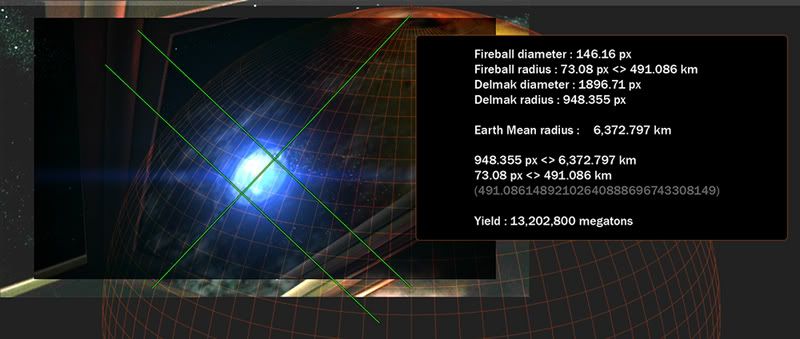
Maybe the ship hit some kind of power plant. It seems the ship is heading for a populated area, and Delmak seems rather super industrialized.
So we have to look at Stargate Sg-1, episode Enemies (5.01).
The situation:
Jacob has positionned their ha'tak roughly one star radius from the photosphere of a blue giant, located in some uncharted part of the universe.
The dialogue says that the hull will be able to hold on for one hour, while the shields will last for ten hours at the same rate.
So we need the dimensions of a ha'tak, and the specs of the various blue giants.

Pyramid core height: 255.9 m.
Ha'tak width: 675.88 m.
Please also consider that these measurements are based on an old generation Ha'tak. This can mainly be seen because of the structural differences, both inside and outside the ship.
Things become quite special at that point. For example, a ship belonging to one System Lord may have better hyperdrives, but weakier shields (according to these observations, Apophis' ships could go at 207,599.759 c, way beyond the often touted 32,000 c figure).
On the same hand, the model I used may be slightly smaller than the newer ha'taks which appeared under Sokar. It's unknown, however, if Sokar's ha'taks were literally newer or not, but they were the latest to introduce a new structural design.
The fact that some other System Lords were seen owning one or more of them may indicate that they either captured them, or already possessed built them on their own. Or maybe they were gifts. We don't really know after all. But it's simpler to refer to them as Sokar's.
The oldest ha'taks to be known are the pyramid ships used by Ra's family.
We've seen, in It's Good to be King (season 8), that the models used by Apophis were also used by other minor System Lords.
However, considering that the model seen in the first picture might be smaller than those introduced by Sokar, it will provide us with conservative dimension figures.
Now let's see the ratio between shield width and ship width:

We will assume the ratio (1.06) is the same concerning the heights. This will also provide a conservative figure, because of the core's base, which requires a greater gap between the shield's inferior hemisphere and the base. Plus there's the bulge to consider, which would have required a special shape, increasing the surface even more.
So we're definitely going for a low end here.
Now, the areas:
- Circle: pi * radius²
- Ellipse: pi * radius1 * radius2
- Sphere: 4 * pi * radius²
So I'm going to bend maths a bit and go with a flattened sphere's area of "4 * pi * radius1 * radius2".
S = Shield Surface
S = 4 * pi * (675.88 / 2) * (255.9 / 2) * (1.06)²
S = 4 * pi * 337.94 * 127.95 * 1.1236
S = 610522.23372978025782732309506607
S = 6.105 * e5 m²
Now, I'm going to use the luminosity/m² figures at the photosphere, which An Ancient obtained, at Spacebattles. They're correct, so I'll use them, divided by four, coupled to my shield surfaces.
Low End Shield Capacity
C = Shield Capacity
C = Intensity * Exposed shield surface
C = 6.535 * e9 * S / 2
C = 1.99480875 PW
C = 476.77073374760994263862332695985 KT / s
T = Total Shield Capacity
T = C * 36,000
T = 17,163,746.414913957934990439770553 KT
T = 17.164 GT
Medium End Shield Capacity
C = Shield Capacity
C = Intensity * Exposed shield surface
C = 0.9225 * e11 * S / 2
C = 28.1593125 PW
C = 6.7302372131931166347992351816444 MT / s
T = Total Shield Capacity
T = C * 36,000
T = 242,288.5396749521988527724665392 MT
T = 242.288 GT
High End Shield Capacity
C = Shield Capacity
C = Intensity * Exposed shield surface
C = 0.97825 * e11 * S / 2
C = 29.86108125 PW
C = 7.1369697060229445506692160611855 MT / s
T = Total Shield Capacity
T = C * 36,000
T = 256,930.90941682600382409177820268 MT
T = 256.931 GT
Those figures are, again, going to be conservative because we consider that only a half of the shield is exposed to radiations, although in reality, due to the proximity to the blue giant, actually more than 2/3 of the shield would have to cope with them.
As pointed out earlier on, not all ha'taks are ought to possess the same level of shielding or firepower. For example, in Company of Thieves, the ha'tak piloted by those stupid bounty hunters opens fire on Netan's ha'tak, to destroy it.
After nearly a minute and a half of fire, the shields of Netan's ship aren't even flickering. Finally pissed off, he retaliates and gets rid of the other ha'tak within 16 seconds.
This should probably outline the fact that there's a multitude of various levels of power, especially between major System Lords, who likely add their own touch to their ships.
The ha'taks went through many revisions. Sokar's ships were likely more powerful than the other ships. This would be necessary considering his plans. Plus his motherships were able to cloak, which was deemed impossible by the Tok'ra intelligence. The other most important changes came when Anubis upgraded his own fleet, which Baal likely did as well same when he captured more ships after Anubis' departure. The other came when the replicators enhanced a large number of ha'taks they captured from various Lords, and we don't know how much of these enhancements can still be used without the replicators.
What is sure is that Cronos' ha'tak represents a model that predates those latest two major changes, so even if we're talking about a flagship which would possibly be made better than the rest of his ships, this same ha'tak is also likely to be less powerful than the later ones.
Now, you also have to remember that the ship was doing literally nothing, safe sitting like a duck.
It's unlikely that a ha'tak could keep the shields as powerful, while having power hungry other systems active, like engines, or cannons.
It's also hard to know if the shields would be recharing at the same time. This would lower the figure even more, though a recharge couldn't be that high anyway, otherwise ha'taks couldn't even withstand one single 200 MT shot.
To conclude, I may be too conservative, especially if we want to explain how a ship which would lkely route most of its power towards her shields, would also, more than hour later being exposed to the blue giant, and being hit by a powerful energy wave, still be able to produce that kind of explosion:

Maybe the ship hit some kind of power plant. It seems the ship is heading for a populated area, and Delmak seems rather super industrialized.

